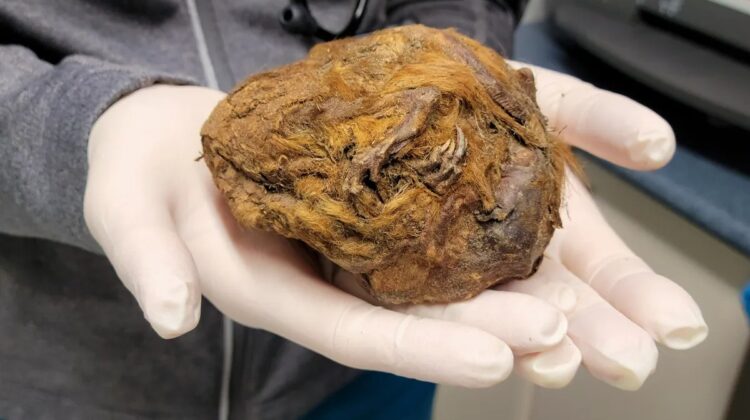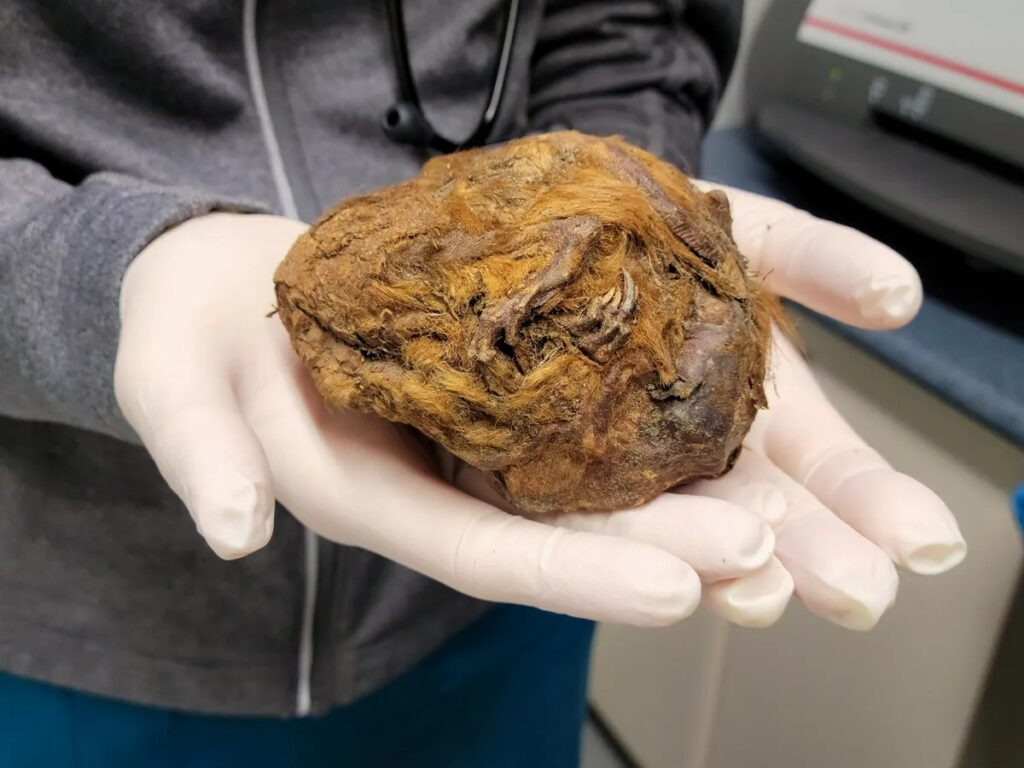
In the frosty depths of Canada’s Yukon, near Hester Creek in the Klondike Gold Fields, Trʼondëk Hwëchʼin Traditional Territory, an unassuming fur ball revealed a breathtaking secret – it’s the mummified remains of a 30,000-year-old Arctic ground squirrel. Discovered by the Yukon Beringia Interpretive Centre, this remarkable find has captivated scientists and nature enthusiasts alike.
The Yukon Beringia Interpretive Centre recently unveiled the ancient squirrel, noting that its pristine condition allows for a detailed examination of its tiny claws. With the assistance of the Alpine Veterinary Medical Centre, an X-ray was performed, unveiling an incredibly intact skeleton, albeit slightly bunched up. The specimen is set to go on public display at the Beringia Centre, offering a unique opportunity for viewers to witness this ancient creature up close.

Grant Zazula, a palaeontologist for the Yukon government, expressed the profound impact of encountering a perfectly preserved animal from 30,000 years ago. In an interview with CBC, he remarked, “It’s not quite recognizable until you see these little hands and these claws, and you see a little tail, and then you see ears… It brings it so to life.”
Despite the passage of millennia, the squirrel’s remarkable preservation is attributed to being locked in permafrost, essentially acting as a prehistoric refrigerator that maintained the integrity of its tissues. The curled-up position of the creature suggests a peaceful demise, possibly as it settled down to hibernate for the winter in its burrow, only to be snowed under and succumb to the icy embrace of its surroundings.

Yukon, Canada, has proven to be a treasure trove of prehistoric remnants frozen in time since the Ice Age. Last year, miners in the Trʼondëk Hwëchʼin Traditional Territory unearthed a baby mammoth with well-preserved fur and skin. In 2020, the discovery of a 57,000-year-old mummified wolf puppy added to the region’s rich paleontological tapestry, showcasing soft tissues and bearing its teeth as if frozen in a snarl.
The diverse array of frozen characters recovered from this part of the world, from wild horses and woolly mammoths to Beringian lions and giant short-faced bears, provides a glimpse into the unique and wonderful ecosystem that thrived during the Ice Age. These remarkable discoveries not only unveil the mysteries of the past but also contribute to our understanding of the intricate web of life that once flourished in this icy landscape.
In the realm of permafrost preservation, scientists in Russia are studying the remains of an 8,000-year-old bison found in the Siberian permafrost. The near-immaculate condition of this specimen has sparked discussions about the potential use of its DNA for cloning, opening new possibilities for unlocking the secrets of ancient life.

Leave a Reply